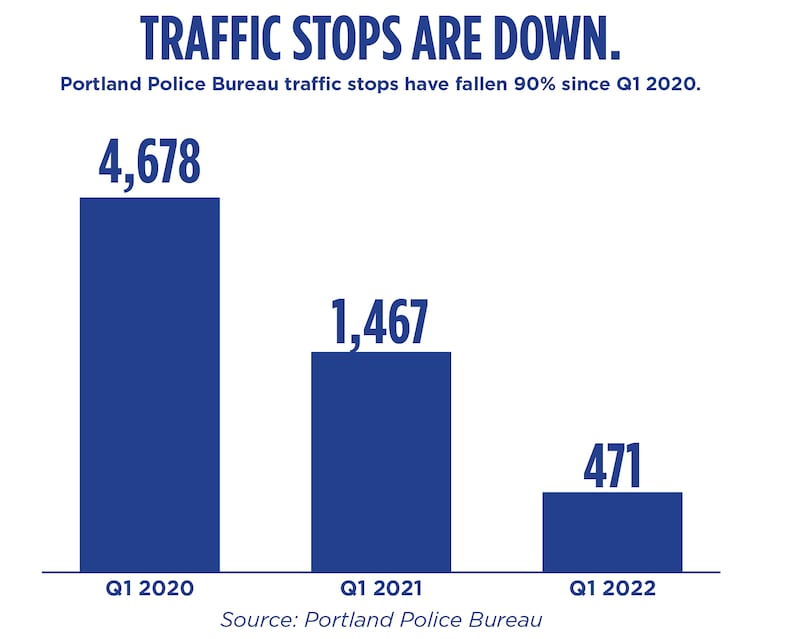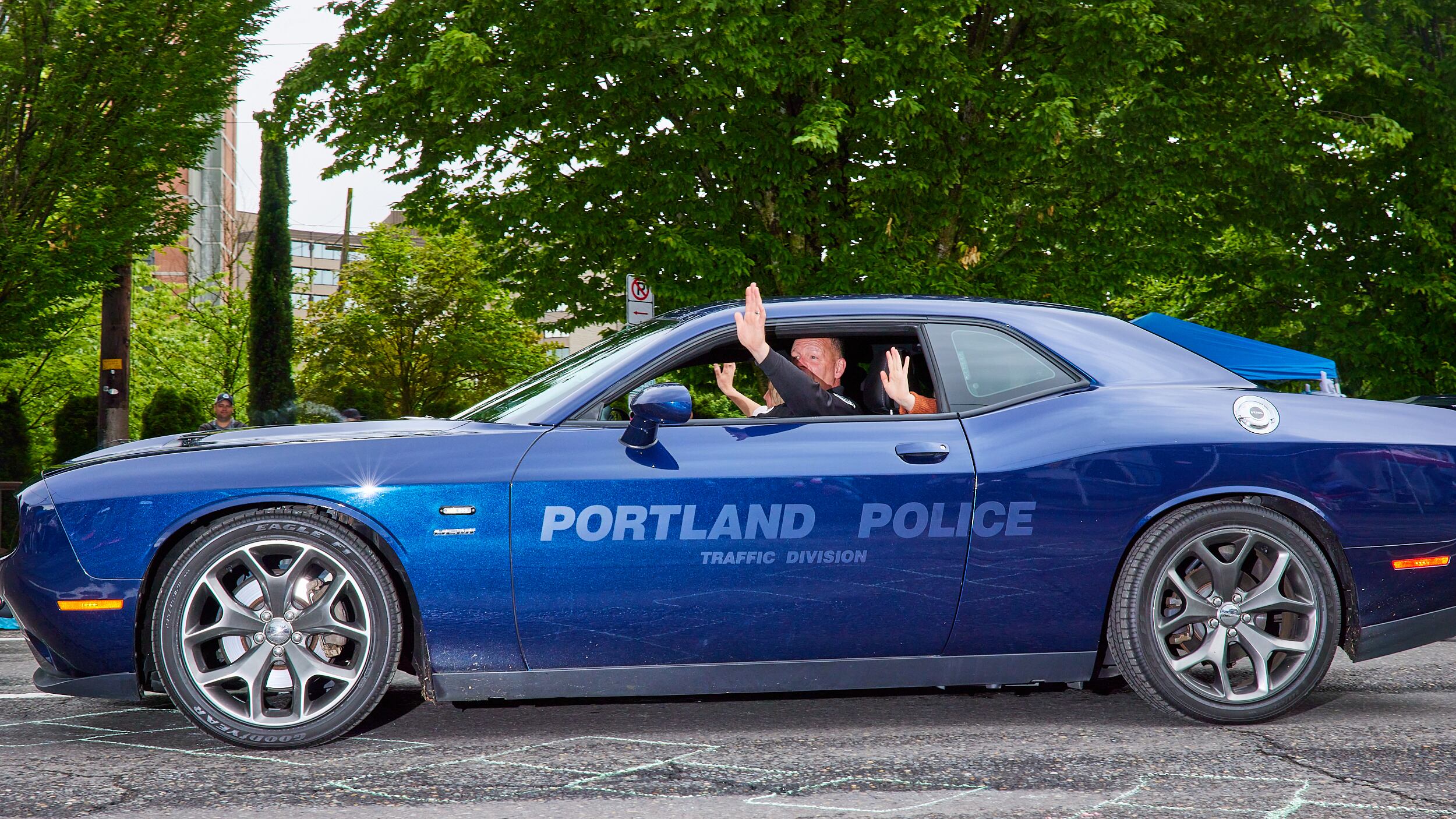Last year, Portland recorded its highest number of traffic deaths—63—in three decades.
Through June 16, 2022, when the Portland Police Bureau reported a single-vehicle fatal crash on Northeast Columbia Boulevard, there have been 27 deaths. That’s a little behind last year’s numbers and consistent with statewide figures: The Oregon Department of Transportation reports crashes are down statewide 9%.
In its analysis of last year’s carnage, the Portland Bureau of Transportation identified two major factors in the jump in fatalities: “speed and impairment.”
Another contributor: the lack of enforcement of traffic laws. Portland Police Bureau statistics show that traffic stops are down 90% from before the pandemic.
PPB spokesman Sgt. Kevin Allen says the bureau’s decision to disband its dedicated traffic unit in February 2021 is a big reason for the drop.
“That was 18 officers and sergeants who were dedicated full time to addressing traffic safety,” Allen says, noting that the traffic unit had already been cut in half since he joined the bureau in 2008.

Civil rights also play a part. Well-documented racial disparities in traffic stops led Mayor Ted Wheeler and Police Chief Chuck Lovell to announce in June 2021 that the bureau would discontinue many low-level stops.
“The goal is to make our city both safer and more equitable, helping reduce the number of Black, Indigenous and people of color who are disproportionately impacted by consent searches and traffic stops,” Wheeler said then.
Early results examined by WW showed that racial disparities in the first three months after the change in protocol remained mostly the same (“Traffic Jam,” WW, Dec. 22, 2021).
The other issue, Allen says, is that the number of officers has declined as the numbers of shootings and homicides have increased sharply. PPB’s latest staffing report shows 774 sworn officers, with 108 vacant positions. “It’s fair to say that the current staffing is lower than anyone here can remember,” Allen says.
Some officers are doing spot duty in traffic enforcement, but the bureau’s priority for the time being, Allen says, is responding to calls.
“If an officer is on his way to an emergency call, or even a non-emergency, the officer might not address a traffic violation,” he says. “People are too often waiting long periods to get a police response. So officers want to get there to serve the caller who’s asking for help, and that means that speeder might not get a ticket.”
In a joint statement, Ashton Simpson of Oregon Walks and Sarah Iannarone of The Street Trust say they would prefer more education and better infrastructure in underserved neighborhoods to more traffic cops: “PPB could have a greater impact with fewer officers by implementing data-driven, systems-based approaches to Vision Zero and concentrating their efforts where they are needed most, for instance deterring speeding and reckless driving in high-crash intersections and corridors.”


